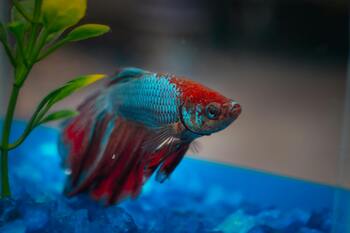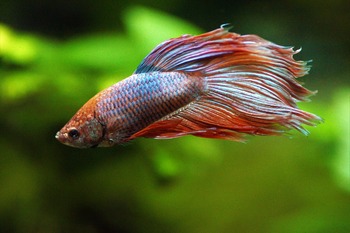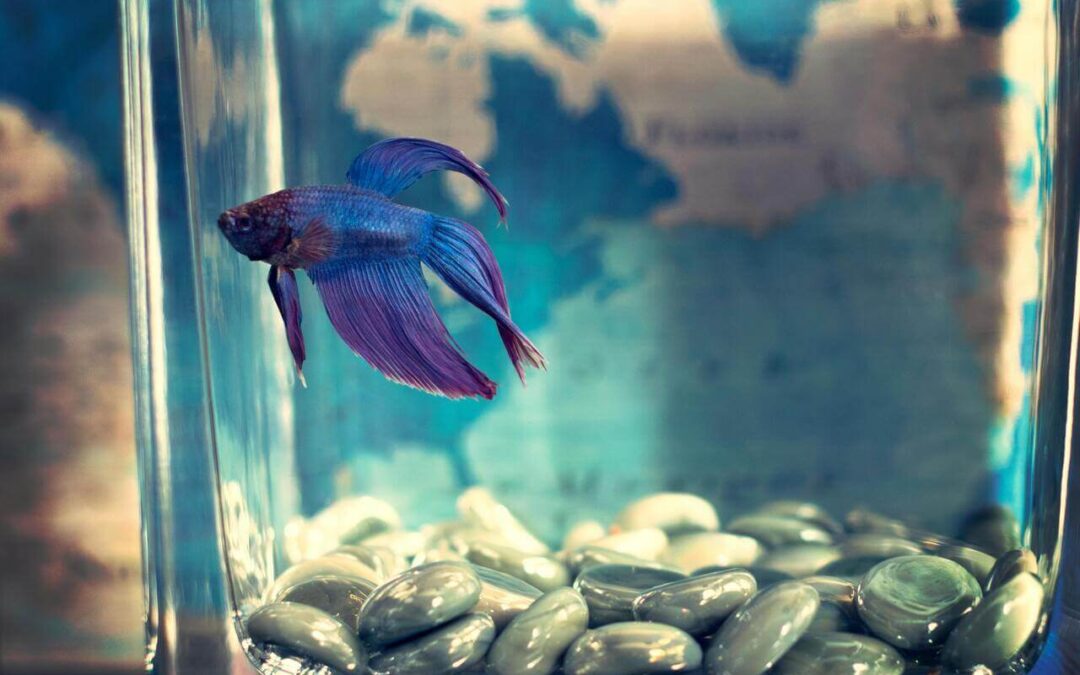Betta fish—those colorful, feisty little swimmers—are one of the most popular pets in the aquarium world. They’re stunning to look at, easy to care for once you know the basics, and full of personality. But if you’re thinking about getting one (or already have one swimming in your tank), you might be wondering: how big do bettas actually get?
The short answer? Most bettas grow to about 2.5 to 3 inches long, not counting their flowing tails. But there’s more to it. Some types, like giant bettas, can grow much larger—up to 5 inches or even more in rare cases. Let’s dive into the details so you know what to expect and how to give your betta the best chance to thrive.
So, How Big Does a Regular Betta Get?
Most of the bettas you’ll find in pet stores are what’s called Betta splendens, or “standard bettas.” These guys typically max out at around 2.5 to 3 inches in body length. Add in their long, dramatic fins, and they can look a bit bigger than they really are.
If you just brought your betta home and it seems smaller than that, it might still be growing. Bettas usually reach full size within their first 6 to 12 months of life.
What About Giant Bettas?
Here’s where things get interesting. There’s a special variety known as the giant betta, and they can grow 3 to 5 inches long, with some rare individuals stretching close to 7 inches. That’s more than double the size of a standard betta!
Giant bettas aren’t a different species—they’re just selectively bred for size over multiple generations. They still have the same vibrant colors and bold attitudes, just on a bigger scale.
If you’re interested in owning one, keep in mind that they need a bit more space and food, and they can have slightly different care needs compared to their smaller cousins.

What Affects How Big a Betta Grows?
Just like people, betta size comes down to a mix of genetics and environment. Here’s a closer look at the main factors:
1. Genetics
This is the biggest influence. If your betta’s parents were large, there’s a good chance your fish will be, too. On the flip side, if they came from smaller stock, they’ll likely stay on the smaller end.
2. Tank Size
A bigger tank doesn’t necessarily mean a bigger fish, but it can help your betta stay healthy and stress-free. A small bowl can stunt growth or cause illness, while a properly sized tank (at least 5 gallons) gives them room to move and grow naturally.
3. Diet
Want a healthy, full-grown betta? Feed a high-quality, protein-rich diet. Bettas are carnivores, so they need more than just flakes. Look for specially formulated betta pellets, and mix in occasional treats like frozen or live bloodworms, brine shrimp, or daphnia.
4. Water Quality
Clean water = healthy fish. Poor water conditions can slow growth and make your betta sick. Keep the water warm (76–82°F / 24–28°C), use a filter, and do regular water changes to keep ammonia and waste levels low.
5. Age
Most bettas reach their adult size by 6 months, though some might continue to grow a bit until they’re about a year old.
How Fast Do Bettas Grow?
Here’s a rough idea of what a betta’s growth timeline looks like:
- First 2 Months: Tiny fry stage. Not much to see yet.
- 2–4 Months: They start growing quickly and look more like mini versions of their adult selves.
- 4–6 Months: Rapid growth and fin development.
- 6–12 Months: Final stage of growth. Full color and size emerge.
If you take good care of your betta, they’ll usually live 2 to 5 years, and sometimes even longer.
Will a Bigger Tank Make My Betta Grow Bigger?
This is a common belief—but it’s not exactly true. A larger tank won’t turn your betta into a giant, but it does help them grow to their full potential. Think of it like giving a child more room to run and play—it doesn’t make them taller, but it helps them grow up strong and healthy.
A cramped tank, on the other hand, can slow down growth or lead to health problems.
Quick Insight
Standard bettas usually grow to about 2.5 to 3 inches, while giant bettas can reach between 3 to 5 inches, with rare cases reaching up to 7 inches. However, those super-sized bettas are exceptions rather than the rule.
Betta Size at a Glance
| Type | Average Size | Growth Time | Tank Size Needed |
| Standard Betta | 2.5 – 3 inches | 6–12 months | 5+ gallons |
| Giant Betta | 3 – 5 inches (rarely 7) | 6–12 months | 10+ gallons |
Common Questions About Betta Size
Q1: How can I tell if my betta is a giant?
If your betta is already over 3 inches long in body (excluding the tail) and was labeled a “giant” or “king” betta when you bought it, then yes—it’s probably a giant variety.
Q2: Can bettas outgrow their tank?
Not exactly. They won’t grow beyond their genetic limits, but if their environment is too small or stressful, they might not reach their full size.
Q3: Do female bettas grow as large as males?
Usually, female bettas are a bit smaller and have shorter fins, but they can still reach around 2 to 2.5 inches in body length.
Q4: What should I feed my betta to help it grow well?
A good mix of betta pellets, plus frozen or live foods like brine shrimp, bloodworms, or mosquito larvae, will do wonders. Just don’t overfeed!
Q5: Are bigger bettas more aggressive?
Not necessarily. Betta temperament varies by individual, not size. That said, all bettas are territorial, so they still shouldn’t be housed with other males or fin-nippers.

Tips to Help Your Betta Reach Full Size
- Use a heater to keep the water warm and steady.
- Keep the tank clean with regular water changes.
- Give your betta a roomy tank—the more space, the better.
- Provide hiding spots and enrichment with live plants and decorations.
- Feed a balanced, protein-rich diet (and don’t overdo it).
Final Thoughts
So, how big do bettas get? For most bettas, expect them to grow to around 2.5 to 3 inches, while giant varieties can reach 5 inches or more. But remember—it’s not just about size. A healthy, happy betta is what really matters.
Give your betta the space, clean water, and food it needs, and it will reward you with color, flair, and tons of personality. Whether you’ve got a tiny standard or a big giant, your betta is one unique fishy friend.






